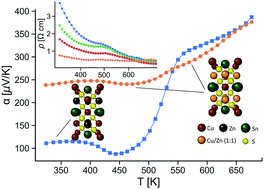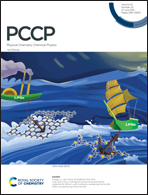Thermoelectric properties of CZTS thin films: effect of Cu–Zn disorder†
Abstract
Cu–Zn disorder is known to deeply affect kesterite (Cu2ZnSnS4, CZTS) due to the low temperature order–disorder phase transition, leading to a random occupation of the two cations in the shared crystallographic planes. This defect complex has been extensively studied in the thin film photovoltaic sector, with considerable efforts in developing methods to quantify disorder. In this study, a preliminary investigation of thermoelectric properties in temperature for thin film CZTS is presented. It is found that Cu–Zn disorder enhances both electrical conductivity and Seebeck coefficient. This can positively affect the thermoelectric performance, showing a mechanism of potential interest for a broad class of quaternary chalcogenides. The order–disorder transition is clearly visible in the electronic properties. This feature is repeatable, with samples from different preparations and groups showing consistent results, qualitatively suggesting electronic measurements as possible methods to quantify disorder. Furthermore, the reversibility of the transition allows the electronic properties to be tuned via specific thermal treatments, pointing to interesting applications in tunable electronics.



 Please wait while we load your content...
Please wait while we load your content...